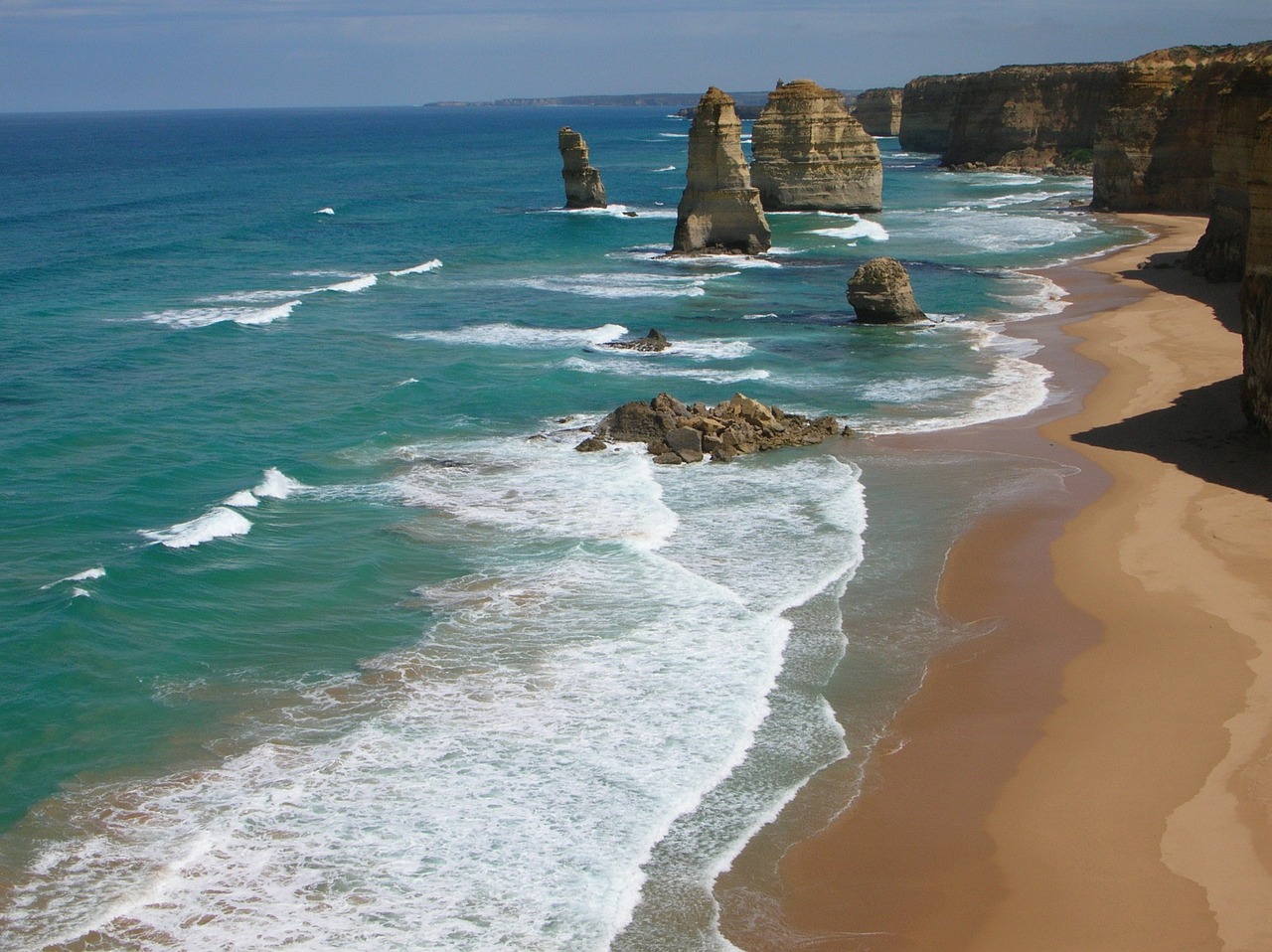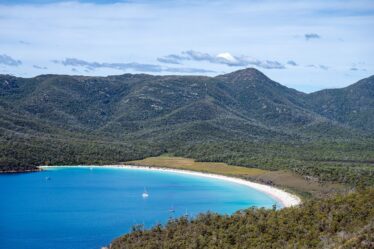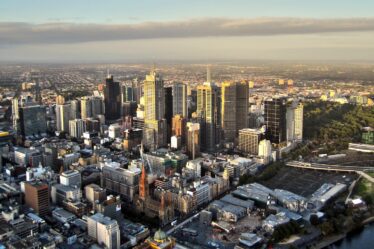
The Great Ocean Road, one of the world’s most scenic coastal drives, stretches 243 kilometers along the southeastern coast of Australia. Beginning in the town of Torquay and ending in Allansford, this iconic route offers breathtaking ocean views, rugged cliffs, lush rainforests, and charming seaside towns. Whether you’re a nature lover, adventure seeker, or simply looking to enjoy a leisurely drive, the Great Ocean Road has something for everyone. This comprehensive guide explores the history, key attractions, activities, and practical information to help you make the most of your journey along this stunning stretch of coastline.
History and Significance
Construction and Purpose
The Great Ocean Road was built by returned soldiers between 1919 and 1932 and is dedicated to the soldiers who lost their lives during World War I. It is the world’s largest war memorial. The road was initially constructed to provide employment for returned servicemen and to connect isolated settlements along the coast.
Heritage and Recognition
In recognition of its historical and cultural significance, the Great Ocean Road was added to the Australian National Heritage List in 2011. The road not only serves as a vital transport route but also as a major tourist attraction, drawing millions of visitors each year.
Key Attractions
The Twelve Apostles
One of the most iconic landmarks along the Great Ocean Road is the Twelve Apostles, a collection of limestone stacks rising majestically from the Southern Ocean. Despite their name, only eight of these towering formations remain. The best times to view the Twelve Apostles are at sunrise and sunset when the changing light creates a stunning display of colors.
Loch Ard Gorge
Located near the Twelve Apostles, Loch Ard Gorge is named after the shipwreck of the Loch Ard in 1878. The gorge features dramatic cliffs, clear blue waters, and a sandy beach. Visitors can learn about the shipwreck and its survivors at the nearby museum and explore walking trails that offer panoramic views of the coastline.
The Grotto
The Grotto is a naturally formed cave and sinkhole that provides a unique perspective of the ocean and rock formations. A staircase leads down to a viewing platform where visitors can admire the serene pool of water framed by the arch of the grotto.
London Arch (London Bridge)
Formerly known as London Bridge, this natural rock formation once had an arch that connected it to the mainland. In 1990, the arch collapsed, leaving two separate rock stacks. The remaining structure is still an impressive sight and a testament to the power of natural erosion.
Cape Otway Lightstation
The Cape Otway Lightstation, Australia’s oldest surviving lighthouse, has been guiding ships since 1848. Visitors can climb to the top of the lighthouse for stunning views of the coast and learn about the area’s maritime history at the accompanying museum. The surrounding area is also known for its koala population, which can often be seen in the eucalyptus trees.
Great Otway National Park
Great Otway National Park spans a diverse landscape of rainforests, waterfalls, and coastal cliffs. The park offers numerous walking trails, including the Maits Rest Rainforest Walk, which features ancient trees, lush ferns, and abundant wildlife. Another highlight is the Otway Fly Treetop Walk, a canopy walkway that provides a bird’s-eye view of the forest.
Activities and Experiences
Surfing and Beaches
The Great Ocean Road is renowned for its world-class surfing beaches. Torquay, the starting point of the road, is home to famous surf breaks like Bells Beach and the annual Rip Curl Pro surfing competition. Other popular beaches include Anglesea, Lorne, and Apollo Bay, which offer excellent conditions for swimming, surfing, and beachcombing.
Wildlife Watching
The region is rich in wildlife, and visitors can expect to see a variety of animals, including kangaroos, koalas, echidnas, and a wide range of bird species. Kennett River is a well-known spot for spotting koalas in their natural habitat. The nearby Otway National Park is also a great place to see native wildlife.
Hiking and Nature Walks
For those who enjoy hiking, the Great Ocean Road offers a plethora of trails that cater to all fitness levels. The Great Ocean Walk, a 100-kilometer trail stretching from Apollo Bay to the Twelve Apostles, provides an immersive experience of the region’s natural beauty. Shorter walks, such as the Erskine Falls walk near Lorne, offer easy access to stunning waterfalls and scenic viewpoints.
Helicopter Tours
For a truly unforgettable experience, consider taking a helicopter tour over the Great Ocean Road. Aerial views of the Twelve Apostles, the rugged coastline, and the lush hinterland provide a unique perspective and incredible photo opportunities.
Practical Information
Best Time to Visit
The Great Ocean Road can be enjoyed year-round, but the best time to visit is during the warmer months from November to April. Summer (December to February) offers the warmest weather and is ideal for beach activities, while spring (September to November) and autumn (March to May) provide mild temperatures and fewer crowds.
Accommodation
Accommodation options along the Great Ocean Road range from luxury resorts and boutique hotels to budget-friendly motels and camping sites. Popular towns to stay in include Torquay, Lorne, Apollo Bay, and Port Campbell, each offering a variety of lodging choices to suit different preferences and budgets.
Getting There and Around
The Great Ocean Road is easily accessible from Melbourne, with the drive to Torquay taking about 1.5 hours. While a self-drive trip offers the most flexibility, guided tours are also available for those who prefer not to drive. Rental cars and campervans are popular options for exploring the region at your own pace.
Safety Tips
- Driving: The Great Ocean Road features winding sections and sharp curves, so it’s important to drive carefully and adhere to speed limits. Be mindful of wildlife, particularly at dawn and dusk.
- Weather: The coastal weather can be unpredictable, so it’s advisable to check the forecast and pack appropriate clothing. Layers are recommended as temperatures can vary throughout the day.
- Swimming: Only swim at patrolled beaches and be aware of ocean currents and riptides. Look for safety signs and follow the instructions of lifeguards.
Environmental Responsibility
The natural beauty of the Great Ocean Road is one of its greatest assets, and it’s important to preserve it for future generations. Visitors are encouraged to follow Leave No Trace principles, such as disposing of waste properly, staying on designated trails, and respecting wildlife.
Conclusion
The Great Ocean Road is a journey of discovery, offering unparalleled natural beauty, rich history, and a variety of experiences that cater to all interests. From the awe-inspiring Twelve Apostles and the tranquil rainforests of Great Otway National Park to the charming seaside towns and pristine beaches, this scenic drive showcases the best of Australia’s southern coastline. Whether you’re embarking on a day trip or an extended road trip, the Great Ocean Road promises an unforgettable adventure filled with breathtaking landscapes, unique wildlife, and cherished memories.


